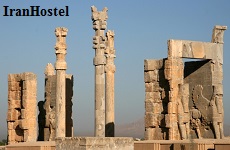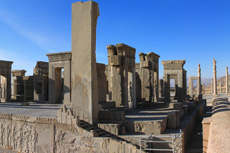Located at 60 km northeast of the city of Shiraz, Persepolis, a World Heritage Site, is a complex of magnificent ancient ruins dating back to around 2500 years ago. The literal meaning of the word Persepolis is the city of Persians and the imposing ruins make any subtle observer acknowledge the factors behind the undefiable power of the Persians at that time. Persepolis was one of the three capitals of the Persian Empire. While the Median cities of Ecbatana and Shush were the administrative capitals of the Empire, Persepolis was the ceremonial one where the Achaemenid kings would greet their awe-stricken guests from around the world.

In 522 BC, Darius the Great became the king of the Persian Empire and commissioned the construction of Persepolis. The construction was continued and completed after Darius’s death and during the reigns of his son Xerxes the Great and the rest of Achaemenid kings. In 334 BC, Alexander The Great started a 4-year war against the Persian Empire and the last Achaemenid king, Darius III who was ruling an unstable Empire at the time fled to Ecbatana while Alexander seized Babylon, Shush and finally the Persian capital, Persepolis. In the same year, Persepolis was burnt to the ground by Alexander and his army.

Persepolis complex of ruins comprises of four major groupings; the military buildings, the treasury building, the reception hall, and the kings’ residential palaces. The list of noted structures in the ruins includes the Great Stairway, the Gate of Nations, Darius’s palaces; Thachra and Apadana, the Hall of a Hundred Columns, the Three-Gated Hall, the Hadish Palace of Xerxes, the palace of Alexander III, the Imperial Treasury, the Royal Stables, and the Chariot House.
The main material used in the construction of Persepolis was grey limestone and it is stunning to see the whole site had been equipped with a sewage system comprised of channels dug under the ground through the rock.
Book a Persepolis Tour
0 Comment(s)
|
Comments and Reviews |
|
|